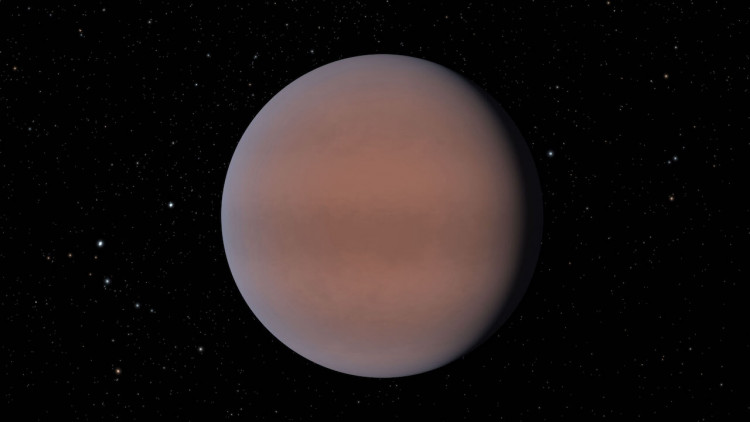NASA announced Thursday that scientists have identified water vapor in the atmosphere of a newly discovered planet.
The planet, dubbed TOI-674 b, is a little bigger than Neptune and orbits a red-dwarf star around 150 light-years distant, which is considered close in astronomical terms, according to the agency.
An international team of scientists led by Jonathan Brande of the University of Kansas discovered the water vapor, which included researchers from NASA Ames Research Center, IPAC, and other Caltech research facilities.
From a collaboration between the Hubble Space Telescope and TESS, NASA's Transiting Exoplanet Survey Satellite, which launched in 2018, the discovery arose. TESS discovered the planet first, and Hubble studied its light spectrum.
Data from the now-retired Spitzer Space Telescope also helped astronomers tease out some of the planet's atmospheric components.
Many questions remain, such as how much water vapor its atmosphere holds, but researchers say the planet's atmosphere is far easier to observe than those of many exoplanets, making it a prime target for deeper investigation.
"The planet's distance, size, and relationship to its star make it especially accessible to spaceborne telescopes," NASA wrote in a news release. "As the comparatively large planet - in a size-class known as "super Neptune" - crosses the face of its smallish star, starlight shining through its atmosphere can be more easily analyzed by our telescopes."
It's not the first time water vapor has been discovered in an exoplanet's atmosphere. The Hubble Space Telescope discovered water vapor on the surface of a faraway planet known as K2-18b in 2019, which is in the "habitable zone" of its parent star, where conditions are favorable for liquid water to exist on the planet's surface.
However, scientists noted that it is unusual to find a Neptune-size planet with a detectable atmosphere so near to its parent star, implying that the exoplanet was born further away before migrating to its current location.
Exoplanets are studied by scientists by watching them pass in front of, or transit, their host stars. The presence of water vapor or other telltale chemical signatures, such as methane or carbon dioxide, can be revealed by measuring the spectrum of light that shines through an exoplanet's atmosphere during transits.
The recently launched James Webb Space Telescope, with a design that will give us an unprecedented view of distant stars and their planets, is one technology perfectly suited to investigating exoplanets like it.
The preprint has been submitted to The Astrophysical Journal and is available on arXiv.






